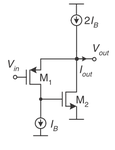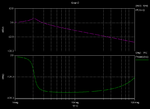dominoeff
Junior Member level 1
- Joined
- May 6, 2010
- Messages
- 17
- Helped
- 0
- Reputation
- 0
- Reaction score
- 0
- Trophy points
- 1,281
- Location
- china-mainland
- Activity points
- 1,413
Hi guys:
I am using a super source follower to enhance my driver's slew rate.but it cause my circuit oscilation,AC simulation shows the super source follwer gave conjugate poles,by my analysis,it get two polses but should not be conjugate poles ,could anyone explains this for me!
I am using a super source follower to enhance my driver's slew rate.but it cause my circuit oscilation,AC simulation shows the super source follwer gave conjugate poles,by my analysis,it get two polses but should not be conjugate poles ,could anyone explains this for me!

